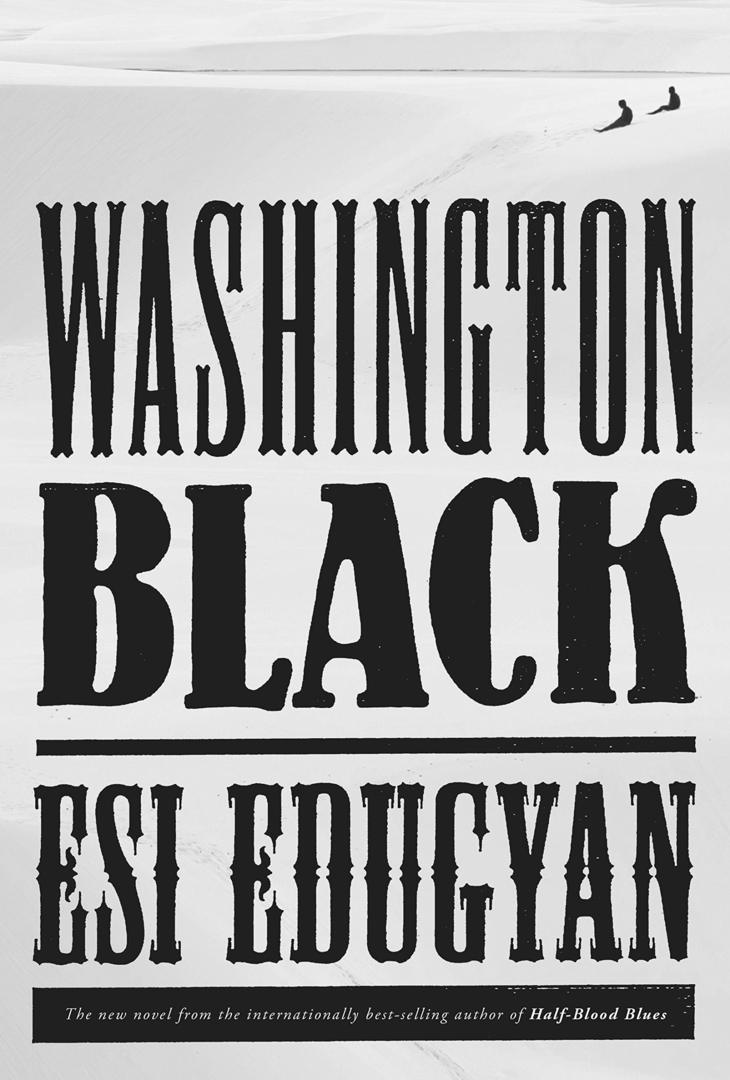Esi Edugyan’s 19th-century tale Washington Black left me with many unanswered questions. The story is told by George Washington Black, also known as Wash, an 11-year-old boy born and raised as a slave on the Faith Plantation in Barbados. Chosen by the plantation owner’s brother, Christopher Wilde (Titch), Wash is taken as his personal assistant to aid him in eccentric science experiments instead of working the fields during the day. We follow the pair as they travel up the East Coast, landing in the Arctic, then eventually separating, leaving Wash on his own to find his way in Nova Scotia. During the second half of the novel, Wash recounts his time and companions in Canada, and his escapes from the Faith Plantation’s workers trying to capture him, followed by his transatlantic travels with a family he met in Canada as they research aquatic life together. While in England, Wash chases answers from his past while working with Mr. Goff and his daughter, Tanna, to create the world’s first living aquatic museum.
The first and second halves of the book are very disconnected from each other. Several ideas are introduced and embellished in the first 200 pages but unfortunately aren’t followed up on during the last 200 pages. While at the plantation, Wash makes several mentions of a girl his age named Emilie whom he appears to have romantic feelings for. Before being whisked away on his adventures, he sees Emilie one last time at the Faith Plantation, but she is pregnant. Wash is shocked and confused, which makes sense because she is 11 years old at the time and was presumably impregnated by a white slave owner. With all of this emotion thrown at us, Wash narrates us out of the scene, never to see or hear from her again. This plot line had potential to rise up again as Wash takes a lover in his adulthood, possibly remembering his first love. Unfortunately this does not happen, leaving us wondering what happened to Emilie during the years to come.
Another discontinued story introduced in the first half occurs when Wash and Titch leave the plantation from Titch’s almost perfected hot air balloon; a project he had been working on for quite some time. (This form of travel had not been introduced to the world yet.) The two crash on a ship as the balloon sinks into the sea. Even when we learn of Titch after several years have passed in the second half of the book, no further attempts at perfecting the hot air balloon have been made. I’m still wondering why Titch never cared to continue his progress on the project.
This is similar to Wash and the Goff’s work to create the first aquarium in England. They work ferociously to build a glass tank to hold large amounts of water, transport life across the Atlantic, and create a liveable environment in the tanks for the creatures. Tragically, we are never told if their dream to open this museum is achieved.
During his time at the Faith Plantation, Wash befriends an older woman who cares for him like a mother. He calls her Big Kit. Their bond grows strong through the years while they are both ordered to live in a lousy shed. Initially we do not know much about Big Kit. Even when Wash has to leave her behind in the plantation horrors, we do not get any last words from Big Kit. As the years pass and Wash arrives in England, he learns the truth of Big Kit and her origins. I was delighted to see this plotline resolved.
Despite a number of wild turns, Edugyan kept me interested throughout its 400 pages. Regardless of some dull chunks while Wash and Titch are at sea, the book had an overall captivating story.The language and imagery is beautiful from beginning to end. This caught my attention quickly because the book is spoken from a young, uneducated boy’s perspective, therefore the poise and sophistication of the novel’s language does not make sense to be coming from his. Regrettably, the enticing story line and graceful narration doesn’t make up for the disconnected two halves of the book, resulting in too many questions unanswered.


